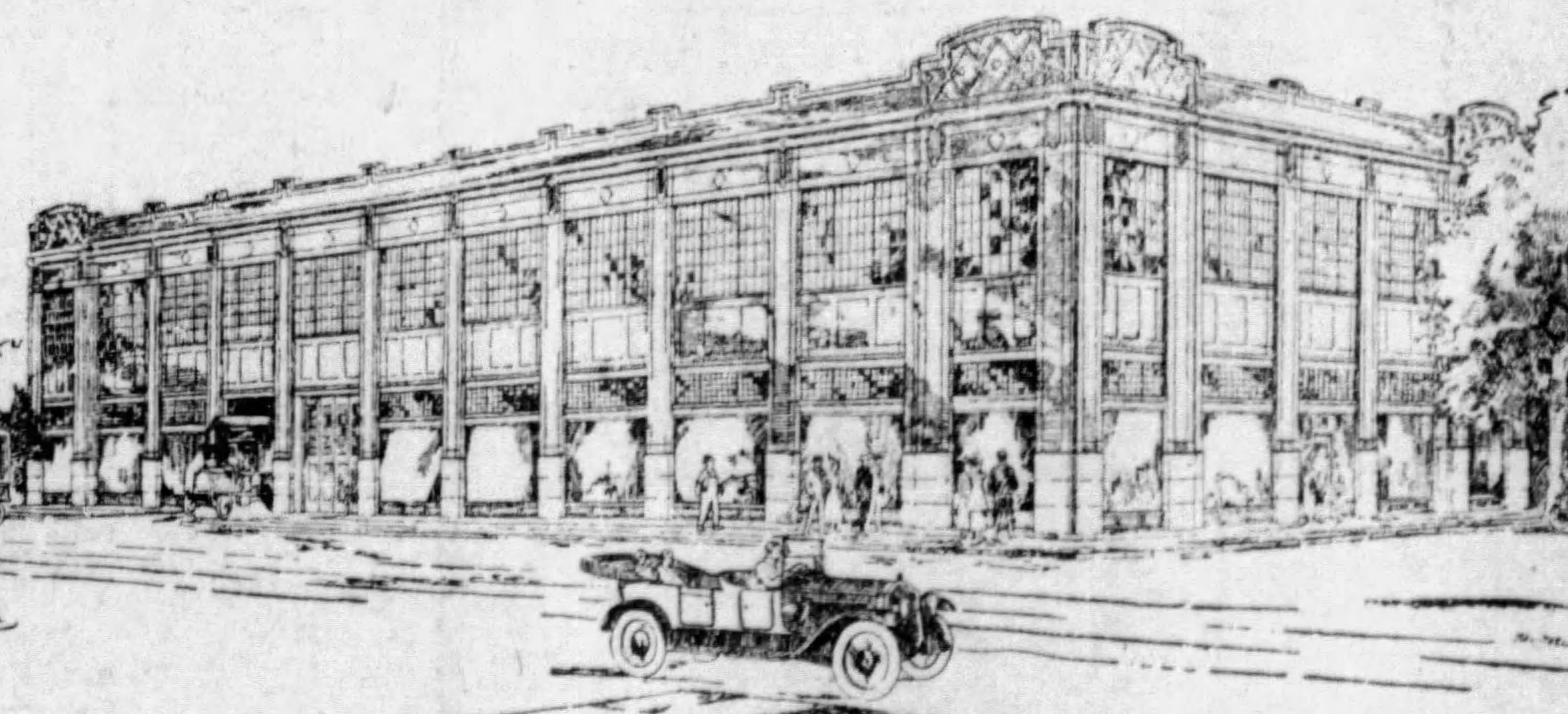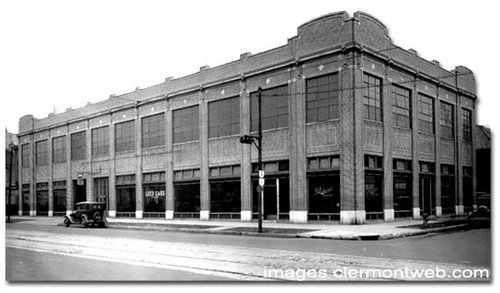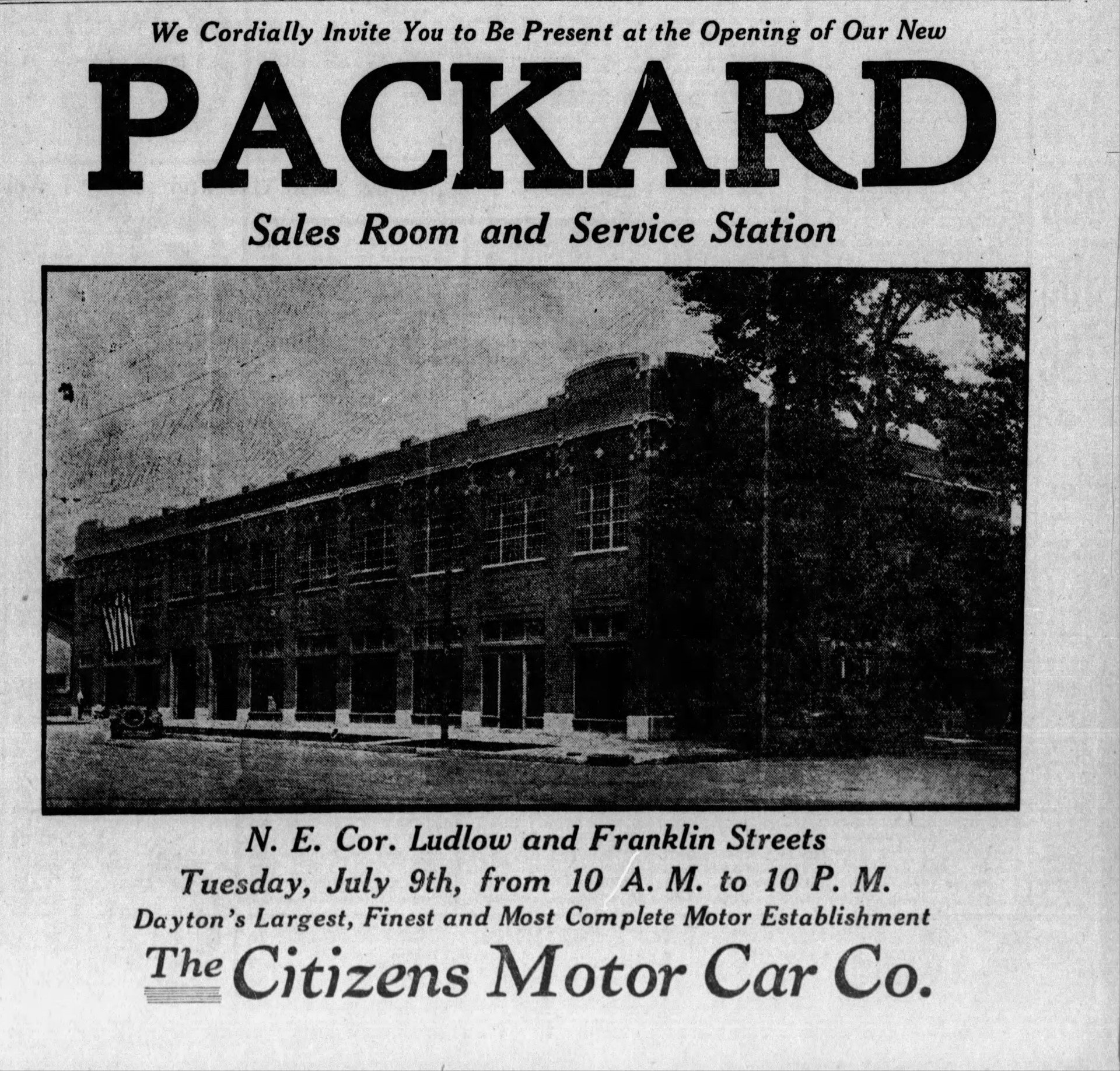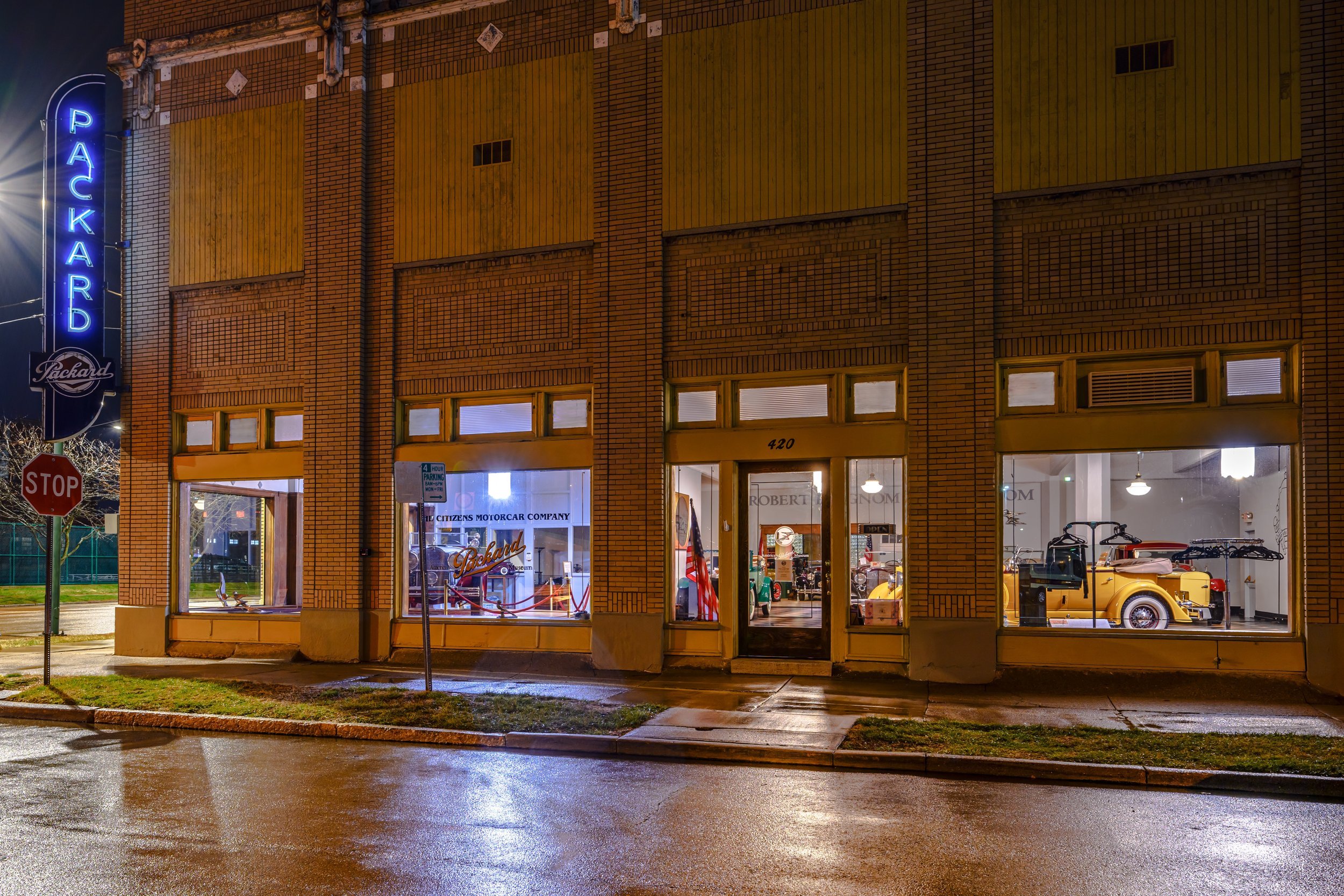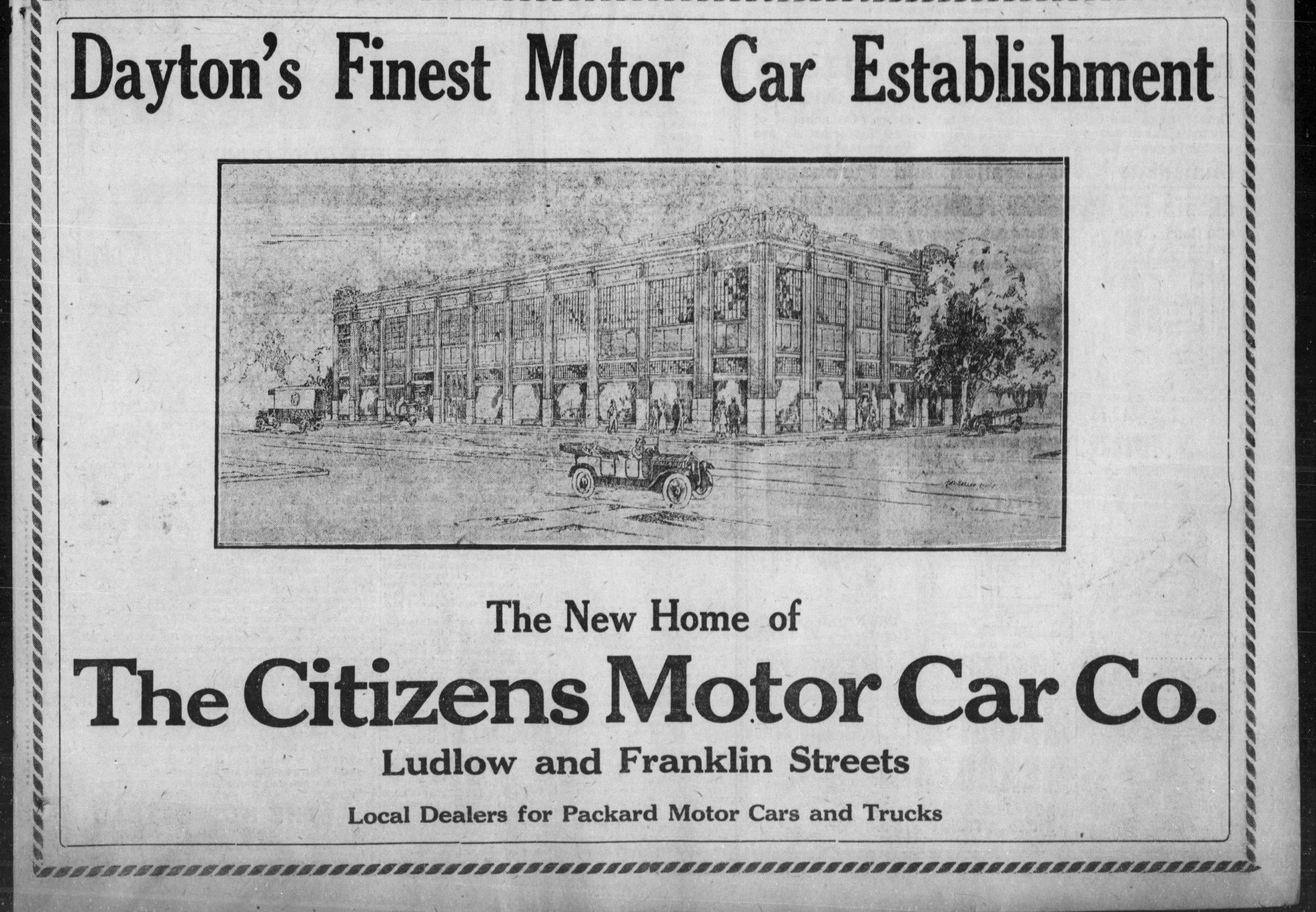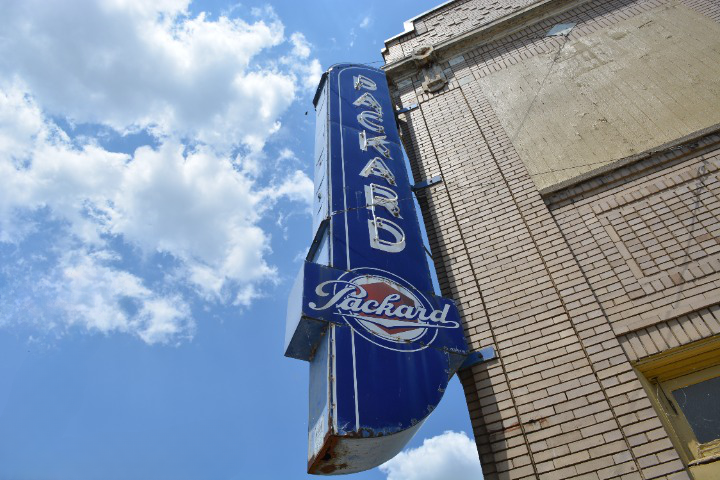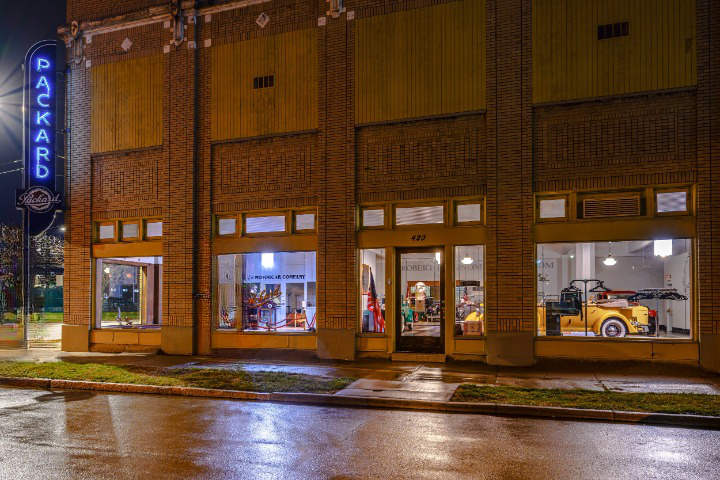
The Museum Building
The largest artifact at America’s Packard Museum is the building itself. The Citizen's Motorcar Company was founded in Cincinnati in 1906.
In 1917, it opened a location at 420 South Ludlow Street in Dayton, in a building designed by Dayton architect Albert Pretzinger in the style of Albert Kahn. The building cost $80,000 and was built to be completely fireproof. The plans included options for adding three additional stories which were never built. This was not a dealership. Rather, as a distributorship, Packard Motor Car Company sold its vehicles directly to the public in Dayton.
Shown is a 1917 drawing of the planned building and as it looked in 1920. Look for the original 17 foot Packard neon dealership sign on the corner of Franklin St.
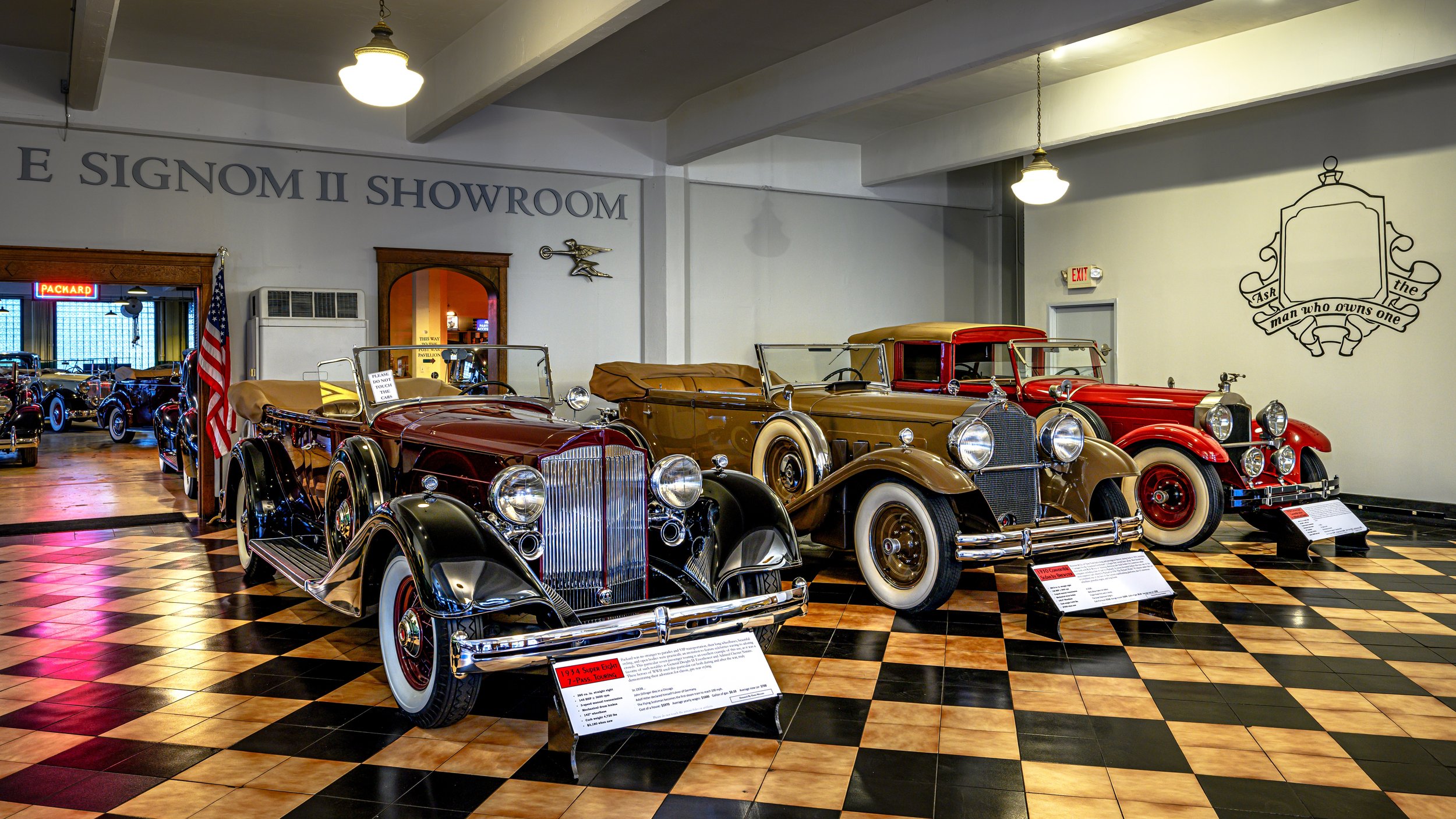
The Showroom
When you enter America’s Packard Museum, you follow the footsteps of many discerning buyers, looking to purchase the finest and most prestigious automobile in America. The floor tiles, light fixtures, and decorations replicate the actual showroom. Look for the original radio in the general manager’s office.
The showroom is now named in honor of Robert E. Signom II, founder of America’s Packard Museum.
The Service Department
After the Showroom is the Service Department area. Packards were known for their reliability and outstanding engineering, but they needed regular maintenance.
The Service Department has most of the original equipment and facilities. Look for the freight elevator (shown here) used to transfer vehicles. The Ohio Elevator and Machine Company replaced the original elevator in 1940, and after eighty years it still runs great!
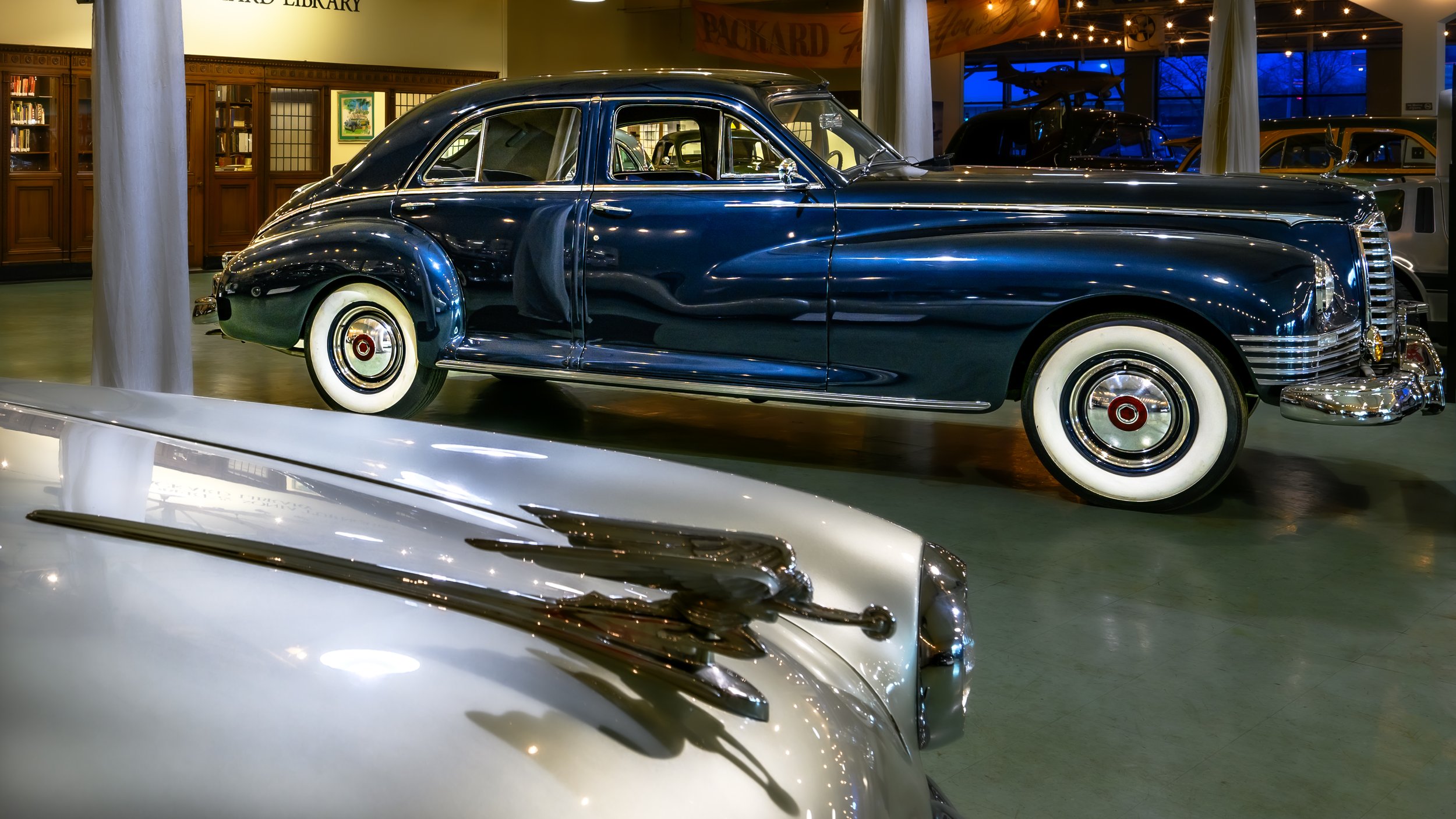
The Pavilion
Visitors pass through a breezeway to enter the Pavilion. Originally, the area was an open used car lot, but it was mostly enclosed in 1936 to improve the shopping experience. This 1937 image from the Dayton Daily News shows the Showroom, and the remaining open lot. The breezeway and Pavilion are to the right of the picture. The lot is now used for staff and volunteer parking.
Look for the green ceiling lamps. These are original fixtures from Packard’s Detroit plant. The displays tell the story of Packard in both World Wars, and the postwar period through 1956. The children’s area (we like to call it the Junior Executive Suite) was the office for sales personnel. The Library was added in 2009, in honor of Packard historian Robert Turnquist.
The Building’s history was always automotive-related.
The Great Depression ravaged American businesses as customers could no longer afford staple items, let alone luxury goods. In 1937, The Citizen’s Motor Car Company relocated when Sales Manager J. R. Knupp bought the building and incorporated Knupp Motors as a Packard dealership. Knupp went out of business in 1940 and Rodgers Pontiac moved in. In 1964, Davis Buick became owners, using the building as a parts warehouse. In 1974, Genuine Auto Parts acquired the building and they left in 1986. The building was unoccupied until 1992, when America’s Packard Museum opened its doors to the public with just seven vehicles on display. Our future looks better than ever, thanks to friends of the Museum.
How You Can Help
We tell the Packard story for this and the next generation. Maintaining original cars and original buildings requires financial support, and we hope you will join us. Please learn more about our stewardship guidelines, corporate memberships, or how to have a private event at the Museum.
Happy motoring from all of us at America’s Packard Museum!

